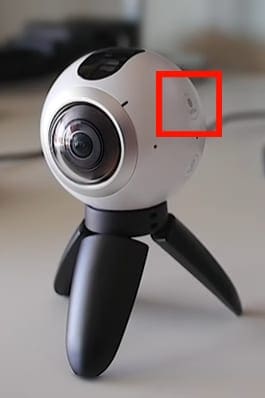

You can pan around in all directions and zoom in and out.

Once on your phone, the app allows you to view them in various ways: Depending on their duration, they can therefore take several minutes to transfer. Videos take longer obviously (to give you a rough idea, a 56 second clip I recorded at 3840 x 1920 resolution was 406mb). This uses Wi-Fi Direct and is reasonably quick - transferring photos (which weigh in at around 5–6mb each) takes about 10–20 seconds. Using the app, you can then wirelessly download photos and videos from the camera to your phone. I got some good results with a selfie stick as it ends up being invisible in the final shot but is much longer than the mini tripod, thus giving photos and videos the appearance that the camera was floating in the air. Fortunately, it attaches via a standard tripod screw mount, so you can use pretty much any tripod or selfie stick instead. With the legs folded in it also doubles as a handle for holding the camera, though your hand will then be visible in the shot. However, if you have the wrist strap attached to it, that does tend to be partly visible in the photo. The supplied mini tripod is quite sturdy and is invisible in photos and videos. You can’t not get something in the shot! Of course, a consequence of this is that yourself are in the shot too - unless you hide from the camera and remote control it from your phone.

However, after a while I realised it doesn’t matter (as much), since it’s recording a complete 360º, spherical view of its surroundings. Alternatively, via the app on your phone, you can see a live viewfinder and remote control all functions of the camera.Īt first I found myself trying to keep the camera level as I would with a normal one. The buttons on the camera let you switch it on, switch between the various photo and video modes, take pictures and record videos. Using the Gear 360 is pretty straightforward. Note how on the unstitched one you can still make out the black area between the two lenses and there is also some duplication of things visible near the edge of the lenses’ field of vision. Screengrabs of how YouTube renders stitched (on the left) versus unstitched (on the right) footage.


 0 kommentar(er)
0 kommentar(er)
